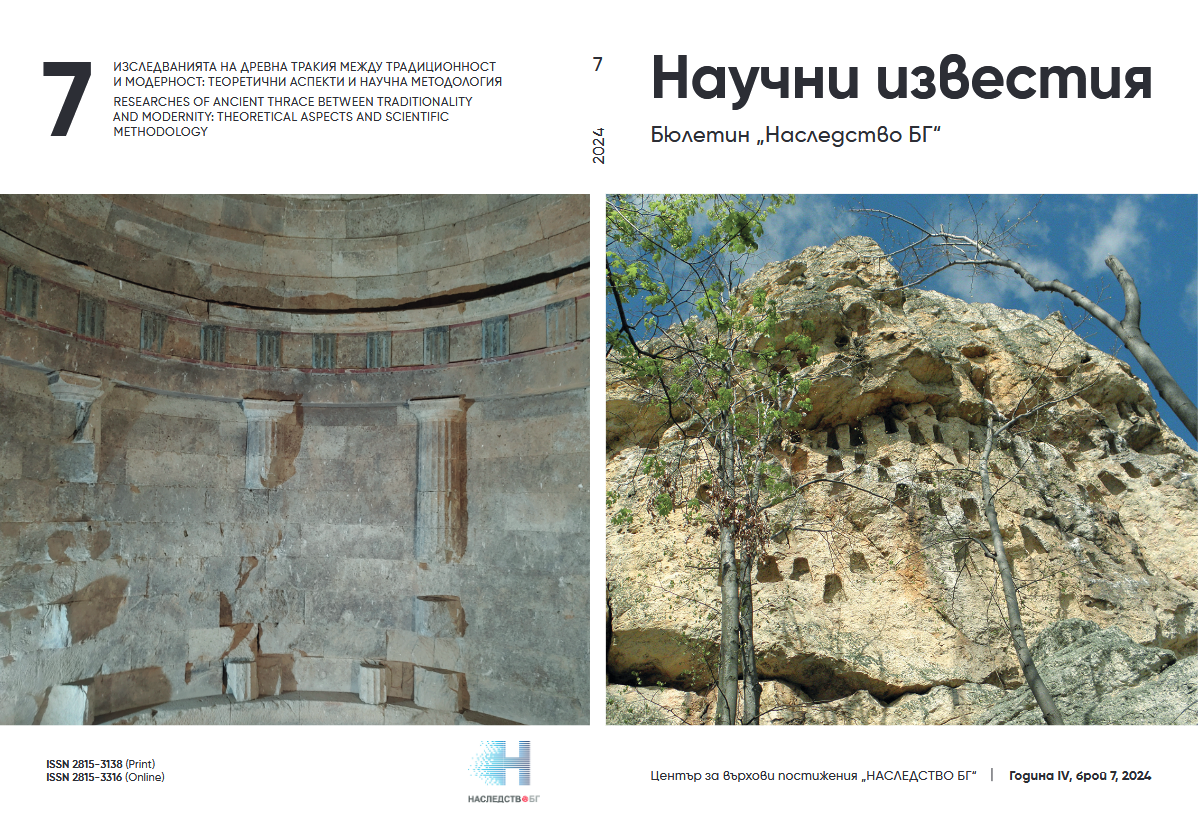From Deultum to DigiDeultum
Keywords:
Roman colony, Deultum, digital humanitiesAbstract
The Roman colony of Deultum is the oldest Roman city in Bulgaria founded in AD 70. Its archaeological research began in the 1980s. From December 2023, a team of specialists from NAIM-BAS, Sofia University St. Kliment Ohridski and Municipal History Museum-Sredets is implementing a three-year projectfunded by Bulgarian National Science Fund (КП-06-H80/7 from 8.12.2023). Its main goal is to explore a possible fundamental change in the historical narrative of Deultum by combining the previous scientific approaches with those of digital humanities and archaeological sciences.
References:
Balabanov, P., & Nenova-Merdjanova, R. (2006). A rare bronze balsamarium from the necropolis of colonia Flavia Pacis Deultensium. – Archaeologia Bulgarica, No 10/3, 35-51.
Boteva, D. (2020). The Historical Context of the Bronze Statue of Septimius Severus from the Roman Colony of Deultum. - Archaeologia Bulgarica, No 24/1, 23-32.
Draganov, D. (2007). The Coinage of Deultum. Sofia.
Hammond, N. (ed.). (1981). Atlas of the Greek and Roman World in Antiquity. Park Ridge.
Kostova, K., & Sharankov, N. (2023). Burial with Magical Gems in the Western Rock-cut Necropolis of the Roman Colony of Deultum in Thrace. - Archaeologia Bulgarica, No 27/1, 49-60.
Milceva, R. (2020). Ein Bronzekopf des Septimius Severus aus Deultum. - Archaeologia Bulgarica, No 24/1, 17-22.
Raycheva, M. (2022). Minerva Deultensis and the Gigantomachy on Her Shield. – Archaeologia Bulgarica, No 26/1, 57-81.
Russeva, V. (2023). Anthropological Investigation of Human Skeletal Remains from Late Roman Tombs in the East Necropolis of Deultum. – Archaeologia Bulgarica, No 27/1, 61-72.
Sharankov, N. (2017). The Inscriptions of the Roman Colony of Deultum in Thrace. Archaeologia Bulgarica, No. 21/3, 37-64.
Vagalinski, L. (2008). Barbarian Presence at Colonia Flavia Pacis Deultensium (SE BG). In: THE TURBULENT EPOCH. New materials from the Late Roman Period and the Migration Period. Vol. I. (= Monumenta Studia Gothica v. V.) (eds. Barbara Niezabitowska-Wiśniewska, Marcin Juścinski, Piotr Łuczkiewicz, Sylwester Sadowski). Lublin, 345-353.
Vagalinski, L. (2018). Chronology of Late Antique Fortifications of Deultum (archaeological data). In: Proceedings of the First International Roman and Late Antique Conference “Cities, Territories and Identities”, Plovdiv, 3rd — 7th October, 2016 (= Bulletin of the National Institute of Archaeology, XLIV) (eds. Lyudmil Vagalinski, Milena Raycheva, Dilyana Boteva, Nicolay Sharankov). Sofia, 85-94.
Vagalinski, L. (2024). Archaeological data on Cataclysms in the Roman Colony of Deultum in Southeastern Thrace (2nd - 6th century AD). In: Proceedings of the Fourth International Roman and Late Antique Thrace Conference “Conflicts and Catastrophes in Roman and Late Antique Thrace”, Burgas, 12th - 16th October 2020 (= Bulletin of the National Institute of Archaeology, L) (eds. Lyudmil Vagalinski, Milena Raycheva). Sofia, 37-58.

